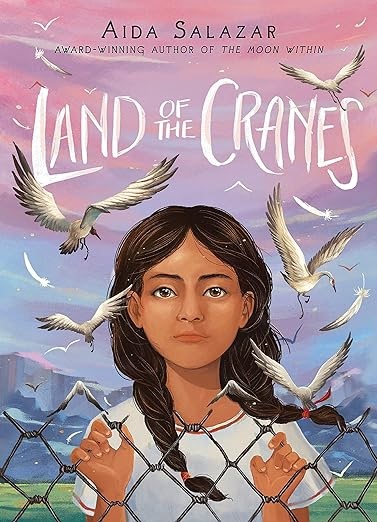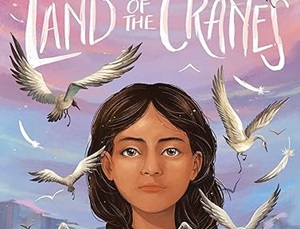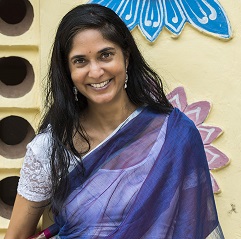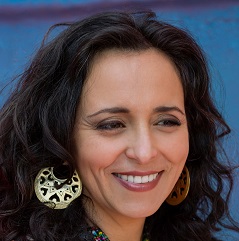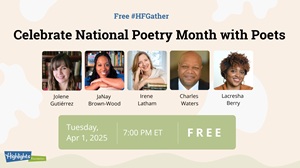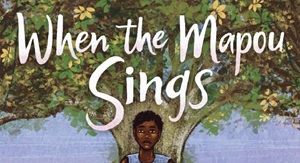In THE LAND OF CRANES, one of Aida Salazar’s award-winning and acclaimed novels in verse, nine year old Betita is the daughter of immigrants who have sought refuge in California after fleeing cartel wars in Mexico. They are building a new life for themselves in America, when her beloved Papi is arrested by ICE (Immigration and Customs Enforcement). Now Betita and her pregnant mother are left behind on their own. And soon, they, too are detained and sent to a camp along with other asylum seekers. Although they are forced to live in horrible conditions, and to live with terrifying uncertainty about the future, Betita finds a way to bring the incarcerated people in the camp together: through art.
In the excerpt below, we see the way different children and adults express themselves, as captured by a few poetic lines and a description of a drawing they’ve each created. It’s a powerful piece that shows how art enables people to express their different viewpoints about a shared experience:
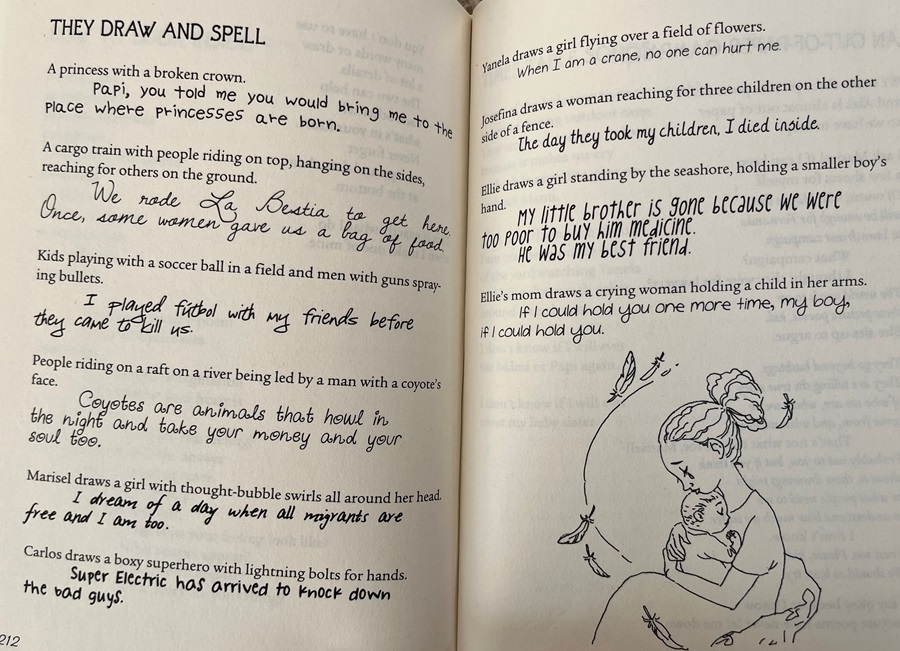
They Draw and Spell
Carlos draws a boxy superhero with lightning bolts for hands.
Super Electric has arrived to knock down the bad guys.
Yanela draws a girl flying over a field of flowers.
When I am a crane, no one can hurt me.
Josefina draws a woman reaching for three children on the other side of a fence.
The day they took my children, I died inside.
Ellie draws a girl standing by the seashore, holding a smaller boy’s hand.
My little brother is gone because we were too poor to buy him medicine.
He was my best friend.
Ellie’s mom draws a crying woman holding a child in her arms.
If I could hold you one more time, my boy, if I could hold you.
This poem not only conveys emotion powerfully, it also provides an insight both into the shared sorrow as well as the unique circumstances and the personalities of each character who is speaking. I love to teach it. Just from the words, we can tell who is an adult and who isn’t: the children preserve an innocence, a sense of trust and hope that hasn’t yet given way to utter despair. We also glimpse each person’s soul by their choice of words. For instance, Yanela is a poet – she has been hurt and yet she uses metaphor to transcend her pain, by envisioning herself as a flying crane. Re-read the excerpt – or better still, the entire poem (and the entire book)! As you read the poem again, make notes on how the use of words and images provides insights into each character.
Writing Prompt:
Now, imagine a group of kids (or young adults) who are brought together by some shared experience. Maybe they are friends, maybe not; maybe the shared experience is traumatic, maybe it’s trivial. Think about how each character would describe this experience, and how their choice of words (or images, or both) reflects who they are.
